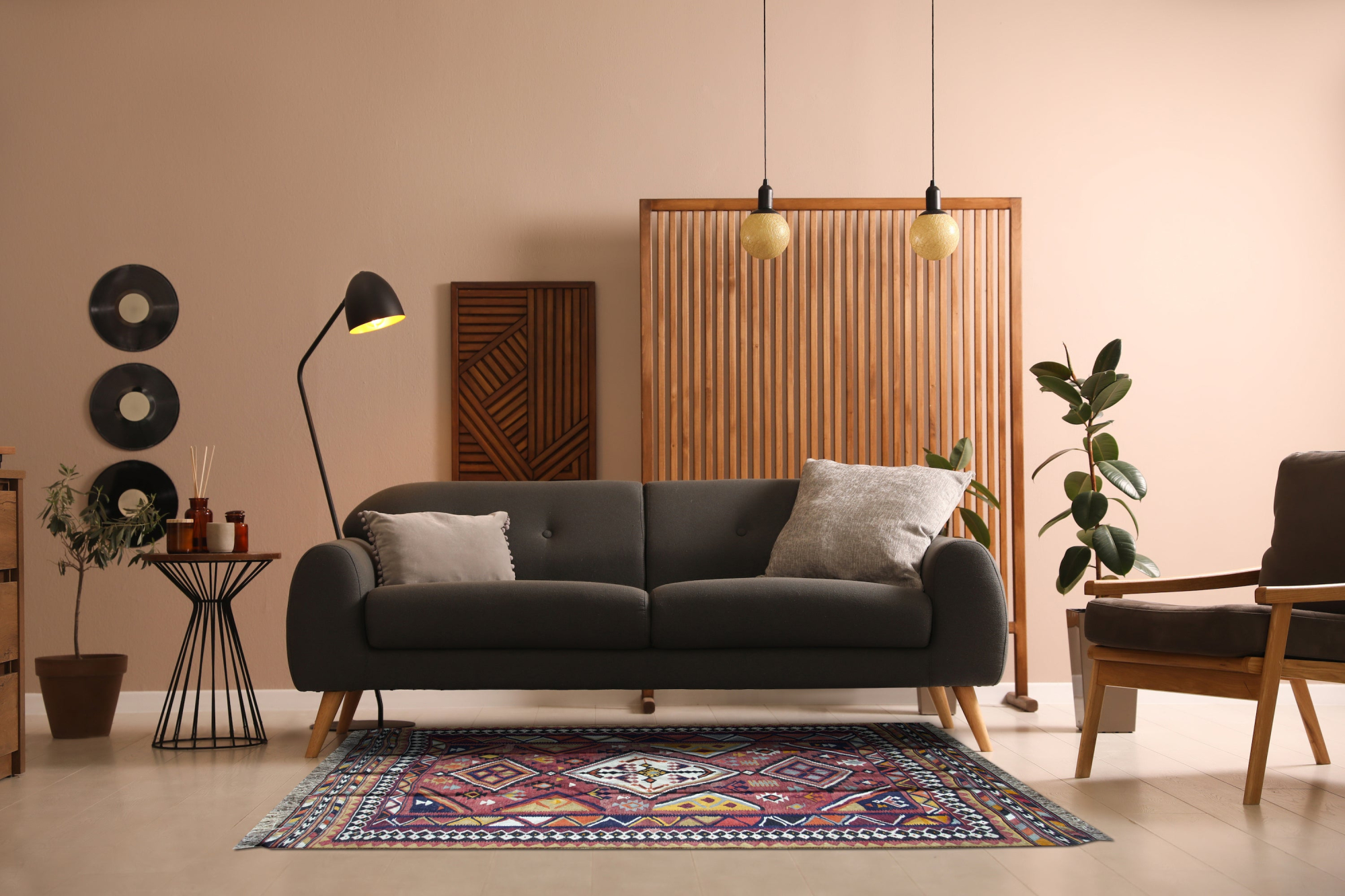A Comprehensive Guide to Shiraz Rugs
- Home
- Tabrizi Rugs Blog
- A Comprehensive Guide to Shiraz Rugs

A Comprehensive Guide to Shiraz Rugs: History, Characteristics, and Care
When it comes to handmade rugs, Shiraz rugs stand out as true representations of Persian artistry and culture. Named after the city of Shiraz in southwest Iran, these rugs are celebrated for their intricate designs, bold colors, and distinctive tribal influences. If you’re considering adding a Shiraz rug to your home, or if you’re just curious about these beautiful pieces, this guide will provide you with everything you need to know about their history, characteristics, and how to care for them.
The History of Shiraz Rugs
Shiraz, a city steeped in history and known as the cultural heart of Persia, is home to the famous Shiraz rug. This region has long been a center for poetry, art, and craftsmanship, and rug weaving is no exception. The Shiraz rug-making tradition goes back centuries, with weavers creating these pieces using techniques passed down through generations.
One unique aspect of Shiraz rugs is the influence of the nomadic tribes that have historically inhabited the region, such as the Qashqai, Khamseh, and Afshar tribes. These tribes were known for their distinct weaving styles and vibrant use of colors, and their influence can be seen in the design of Shiraz rugs.
While the city of Shiraz itself was not known for producing large volumes of rugs, it became a hub where these tribal rugs were sold and traded. The weavers, many of whom were from surrounding villages and nomadic groups, brought their creations to Shiraz to sell in the bustling markets. This gave the city its reputation for high-quality rugs, even though many of the rugs labeled as “Shiraz” were created in the surrounding rural areas.


Distinctive Characteristics of Shiraz Rugs
Shiraz rugs are known for their rich colors, bold patterns, and high-quality craftsmanship. Here are some of the most notable characteristics that set these rugs apart:
1. Design and Patterns
The designs of Shiraz rugs are typically geometric, featuring bold, angular motifs such as diamonds, medallions, and hexagons. The influence of tribal weavers is evident in these designs, which often reflect the symbolism and storytelling traditions of the nomadic tribes. Many Shiraz rugs also incorporate stylized animal and plant motifs, adding a sense of nature and life to the patterns.
A hallmark of Shiraz rugs is the use of large central medallions, surrounded by intricate borders filled with repeating motifs. The designs are usually asymmetrical, giving the rug a unique, handcrafted feel that sets it apart from machine-made rugs.
2. Color Palette
Shiraz rugs are known for their rich, earthy colors. Reds, browns, and blues are the most common hues, often complemented by ivory or cream accents. The vibrant reds in Shiraz rugs are particularly striking and are achieved using natural dyes made from madder root, a traditional dyeing technique.
The natural vegetable dyes used in Shiraz rugs give the colors a warm, organic quality. These dyes also age beautifully, often developing a soft patina over time that adds to the rug’s character and charm.
3. Weaving Technique
Shiraz rugs are typically woven using the asymmetrical (Persian) knot, which allows for more detailed and intricate designs compared to the symmetrical (Turkish) knot. The weavers often use a wool foundation for the rug, with a thick, plush wool pile that gives the rug its durability and softness underfoot.
The wool used in Shiraz rugs is generally sourced from local sheep, giving the rug a robust texture that is perfect for high-traffic areas in the home. These rugs are hand-knotted, a process that can take months to complete, depending on the size and complexity of the design.
4. Size and Shape
Shiraz rugs are usually rectangular and come in a variety of sizes, though they are most often found in medium to large sizes. These rugs are ideal for use as area rugs in living rooms, dining rooms, or bedrooms, where they can serve as the focal point of the space.
Due to their handcrafted nature, Shiraz rugs can also come in slightly irregular shapes. This characteristic adds to their charm and reflects the handmade, artisanal process behind each rug.
How to Incorporate a Shiraz Rug in Your Home
Shiraz rugs are versatile and can complement a wide range of interior design styles. Their rich colors and intricate patterns make them ideal for adding warmth and character to any room. Here are a few ways you can use a Shiraz rug in your home:
- Living Room: A Shiraz rug can be the centerpiece of your living room, adding a touch of history and culture to the space. Pair it with neutral furniture to let the rug’s colors and patterns stand out, or complement it with rich, earthy tones for a cohesive look.
- Dining Room: Shiraz rugs are durable enough to be used under a dining table, where they can anchor the space and add a sense of sophistication. Make sure to choose a rug that is large enough to fit the table and chairs comfortably.
- Bedroom: For a cozy, inviting bedroom, place a Shiraz rug under the bed or in front of a reading nook. The soft, plush texture of the rug will add warmth and comfort to the space.
Caring for Your Shiraz Rug
Shiraz rugs are made to last, but proper care is essential to ensure their longevity and beauty. Here are some tips for maintaining your Shiraz rug:
1. Regular Vacuuming
To prevent dirt and dust from embedding into the wool fibers, vacuum your rug regularly using a suction-only attachment. Avoid using a beater bar, as it can damage the delicate fibers and loosen the knots.
2. Rotate the Rug
To ensure even wear, rotate your Shiraz rug every six months. This is especially important if the rug is placed in a high-traffic area or exposed to direct sunlight, as rotating it will prevent uneven fading and wear patterns.
3. Spot Cleaning
If spills occur, it’s important to act quickly. Blot the spill with a clean cloth (do not rub) to absorb as much liquid as possible. For tougher stains, you can use a mixture of mild detergent and water, but avoid soaking the rug. Always test the cleaning solution on a small, inconspicuous area first to ensure it won’t damage the rug.
4. Professional Cleaning
Every few years, it’s a good idea to have your Shiraz rug professionally cleaned by a rug specialist. They will be able to deep clean the rug without damaging the natural fibers or dyes.
5. Avoid Direct Sunlight
While Shiraz rugs are made to withstand wear and tear, direct sunlight can cause the colors to fade over time. If possible, avoid placing your rug in areas where it will be exposed to prolonged sunlight. You can also use window coverings or UV-blocking films to protect the rug from sun damage.
Conclusion
Shiraz rugs are more than just floor coverings—they are pieces of art, steeped in history and tradition. Their unique patterns, vibrant colors, and superior craftsmanship make them a timeless addition to any home. Whether you’re drawn to their intricate designs or the rich cultural heritage they represent, a Shiraz rug is sure to bring warmth, beauty, and character to your living space.
By following the proper care guidelines, your Shiraz rug can last for generations, becoming a treasured family heirloom. If you’re looking to invest in a quality handmade rug, don’t hesitate to explore the beautiful world of Shiraz rugs at Tabrizi Rugs. We’re here to help you find the perfect rug for your home!
Categories
Recent Posts

 CA ($CAD)
CA ($CAD) 